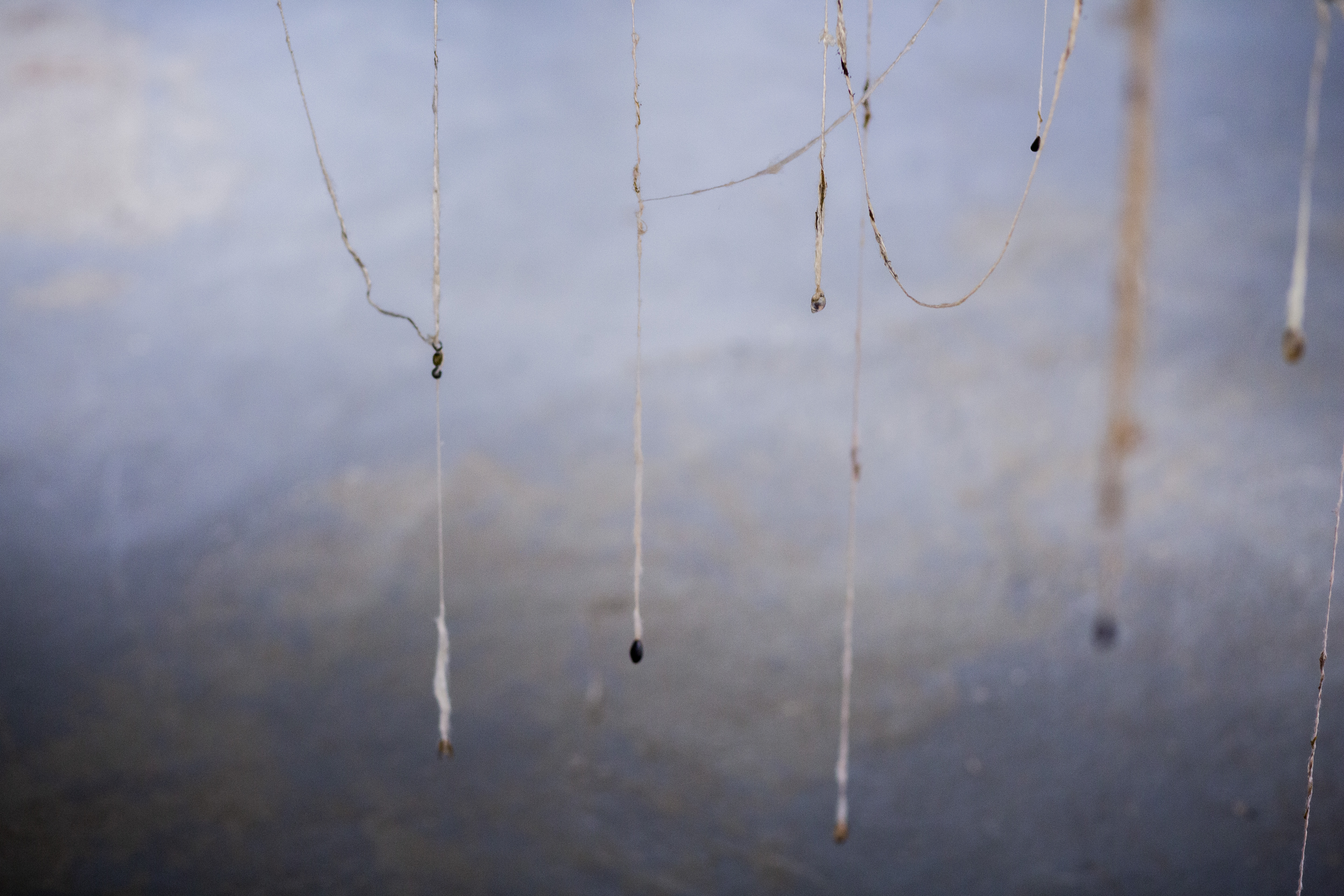Sea Silk
2022
North Atlantic Lighthouse, Hanstholm DK
In collaboration with Maja Lund Hvidtfeldt
Byssus are threads of small hairs secreted from the mussel's foot, with which it attaches itself to rocks, to each other or to the seabed. When the sea is agitated, the quantity and quality of the threads increase. If the mussel needs to move to a more favorable location, it detaches from the ground and wanders.
The exhibition in the Rescue House shows works with byssus threads used as raw material in weavings, embroideries and installations. Silk dyed with algae and shoreline plants creates channels, spirals and mother of pearl. The migratory patterns of the mussels are examined in conjunction with the various women's crafts and their wanderings along the coasts of Sweden and Denmark.
The starting point for the artists' collaboration is the Sardic tradition of spinning sea silk from byssus from the Mediterranean clam Pinna nobilis. Environmental destruction and climate change have caused disease and mass death in the species, which is endangered and red-listed by the IUCN. The lack of materials also threatens the survival of the craft.
The byssus in the exhibition comes from the blue mussel Mytilus edulis. In collaboration with Scanfjord in Mollösund north of Gothenburg, the artists carefully handle the leftover material that is washed away from the shells when the mussels are harvested. The entangled threads carry sand, remains of mussel flesh, shards of seashells and seaweed. The decomposition process is fast and requires careful cleaning and drying.
Over the centuries, the term byssus has shifted meaning between flax, cotton, silk and sea silk. Ancient Greek literature tells of Jason and the Argonauts' hunt for a golden fleece. In medieval texts, the myths of sea silk grow from the original Pinna to the hybrids sea sheep and vegetable lamb of Tartary. In a chemical sense, the byssus threads consist of proteins and keratin, the same as silk and hair. It has often been called the mussels' beard, but the artists define it as hair. The exhibition relates to the historical hairwork performed by traveling women in Denmark and Sweden, and puts the strong symbolism and materiality of hair in relation to byssus to mark change, displacement and processes of grief.
The North Atlantic lighthouse in Hanstholm represents a center point between the seas and the materials that the artists have worked with since 2021. A conversation between fisheries and craft, land and sea.



Photo: Malwa Grabowska / Hipermania

Agna (2021-2022)


Tide (2022)



Hair studies (By Maja Lund Hvidtfeldt)


Mollusca (2022)

Photo: Hedda Rabe
With support from Statens Kunstfond, Estrid Ericsons stiftelse, Helge Ax:son Johnsons stiftelse